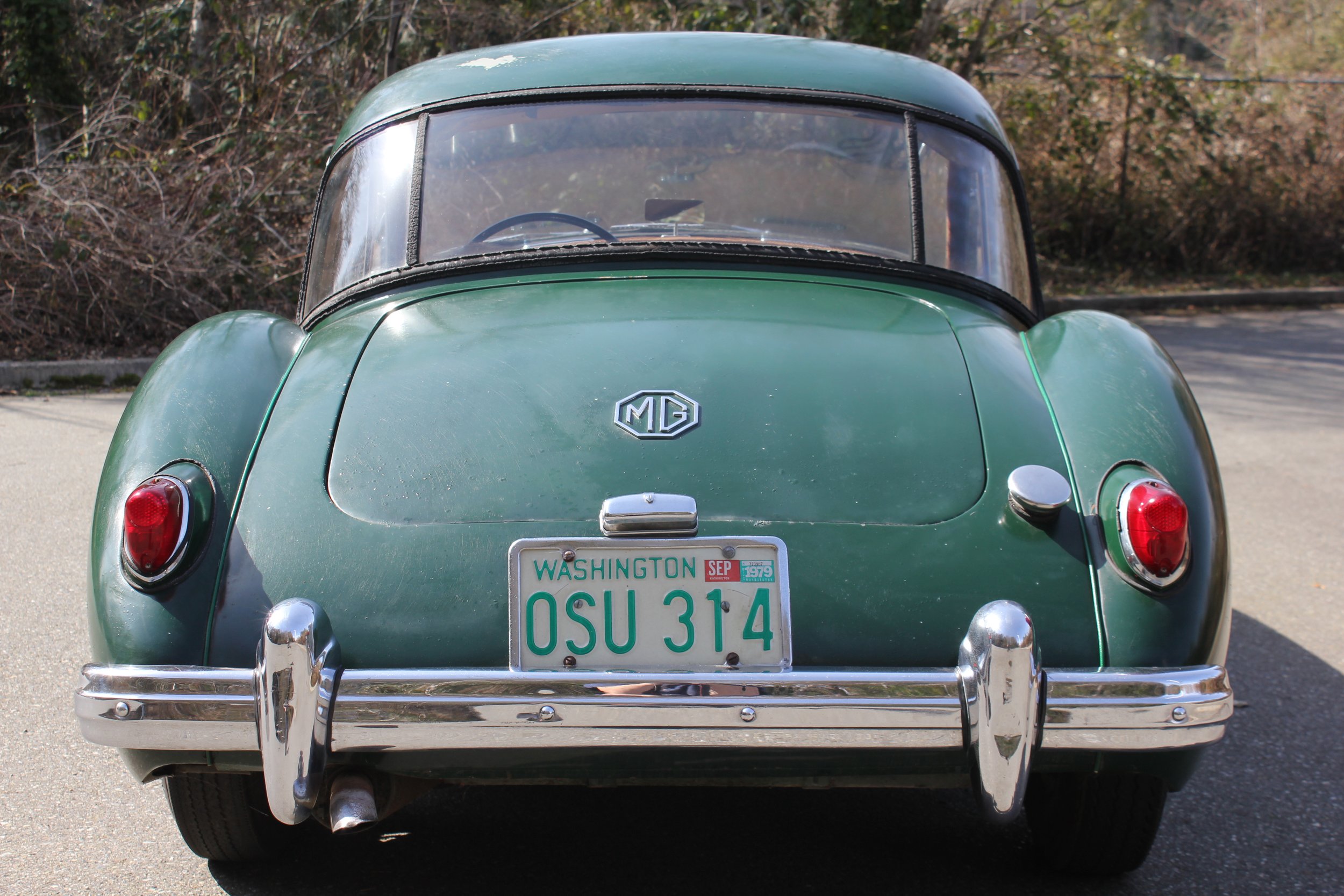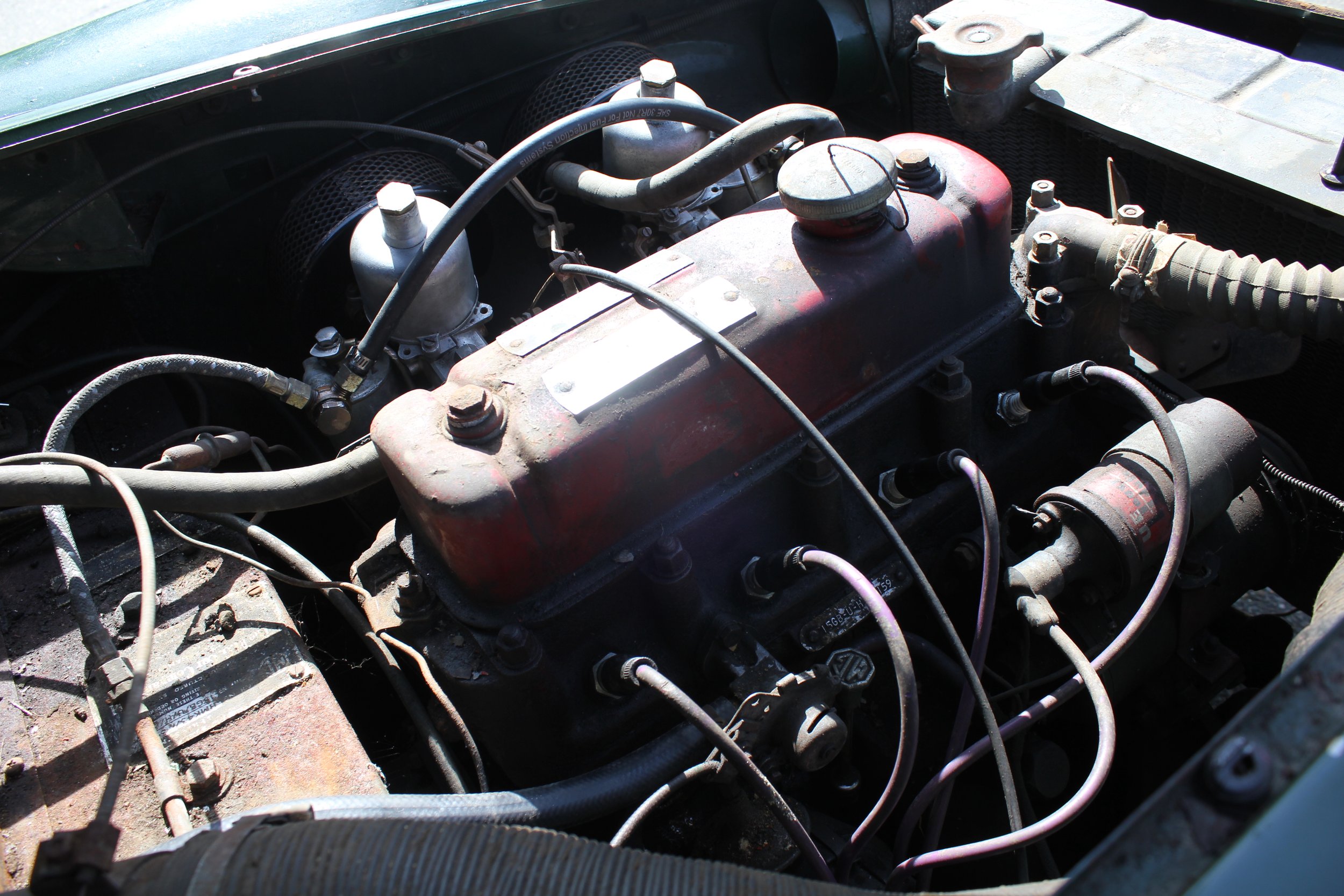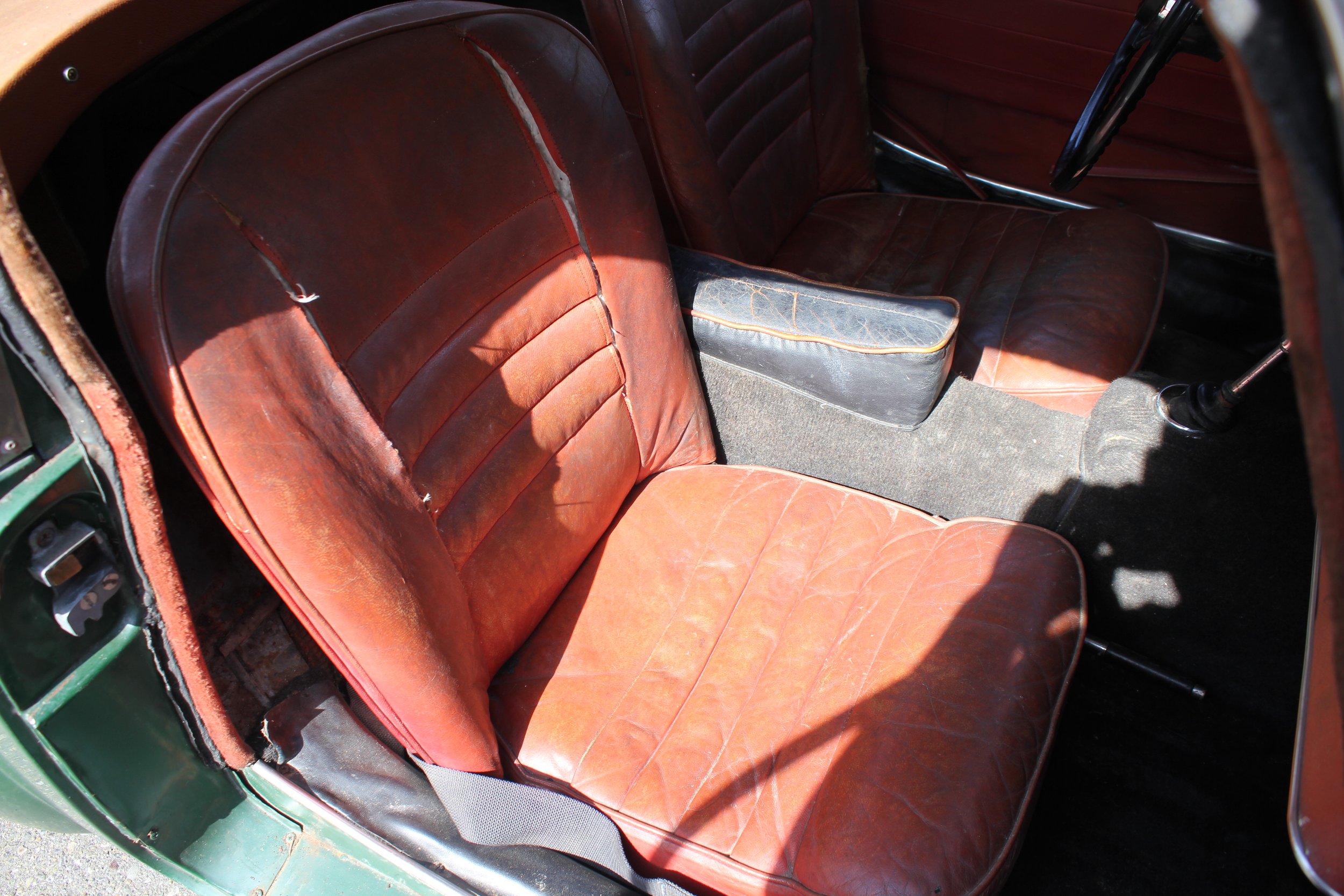 Image 1 of 26
Image 1 of 26

 Image 2 of 26
Image 2 of 26

 Image 3 of 26
Image 3 of 26

 Image 4 of 26
Image 4 of 26

 Image 5 of 26
Image 5 of 26

 Image 6 of 26
Image 6 of 26

 Image 7 of 26
Image 7 of 26

 Image 8 of 26
Image 8 of 26

 Image 9 of 26
Image 9 of 26

 Image 10 of 26
Image 10 of 26

 Image 11 of 26
Image 11 of 26

 Image 12 of 26
Image 12 of 26

 Image 13 of 26
Image 13 of 26

 Image 14 of 26
Image 14 of 26

 Image 15 of 26
Image 15 of 26

 Image 16 of 26
Image 16 of 26

 Image 17 of 26
Image 17 of 26

 Image 18 of 26
Image 18 of 26

 Image 19 of 26
Image 19 of 26

 Image 20 of 26
Image 20 of 26

 Image 21 of 26
Image 21 of 26

 Image 22 of 26
Image 22 of 26

 Image 23 of 26
Image 23 of 26

 Image 24 of 26
Image 24 of 26

 Image 25 of 26
Image 25 of 26

 Image 26 of 26
Image 26 of 26



























Lot Listing #132 1958 MGA Coupe
Details:
Overview:
This 1958 MGA Coupe is a project with rust on almost every panel it would need some extensive work and love. It does drive and shifts gears accordingly so that would not be an issue. All of the rust across the car is from paint peeling and none has rusted through which would be an easy fix with some time and a grinder. Once all is said and done and the rust is grinded or sanded off it would look great finished in its factory green colorway. The red finished interior is a good example of a well-maintained interior with there being only minor rips and tears in the seats. Carpeting is decent as well with only the driver side carpeting needing to be replaced. All dash and interior pieces function as they should with the only exception being the horn. The rest would only need a sprucing up. A great restoration opportunity and something to not overlook. I mean who nowadays can say that their project car actually runs right when they buy it.
History:
Enter the MGA Twin Cam, the top of the MGA food chain. While all MGAs received a revised bonnet this year—the Twin Cam’s taller engine demanded it—new “Twin Cam” emblems were added to highlight the extra power, the new and specially developed cylinder head for the trusty B-series, and the lightly modified chassis. This 1.6-liter, high-compression (9.9:1), twin-camshaft, aluminum head, twin-SU-carbureted motor was good for 108 hp. Available in both the MGA roadster and coupe, the twin-cam engine offered performance so impressive that Girling four-wheel disc brakes were fitted as standard. Center-lock Dunlop wheels replaced the stock four-lug steel wheels or optional wires, while a vinyl-covered dash face and unique seats set the interior apart.
The twin-cam engine unfortunately carries a mixed legacy. Although intended as an engine upgrade for racers and knowledgeable performance enthusiasts, MG’s most exotic powerplant found itself in the hands of owners with no experience with temperamental engines. Early issues with detonation (and subsequent engine failure) were later addressed with lower-compression pistons (8.3:1) and modified ignition timing, at the expense of a few horsepower. In this trim, Twin Cams became far more reliable, but the changes were too late—the reputation was set, and sales never really took off.
Details:
Overview:
This 1958 MGA Coupe is a project with rust on almost every panel it would need some extensive work and love. It does drive and shifts gears accordingly so that would not be an issue. All of the rust across the car is from paint peeling and none has rusted through which would be an easy fix with some time and a grinder. Once all is said and done and the rust is grinded or sanded off it would look great finished in its factory green colorway. The red finished interior is a good example of a well-maintained interior with there being only minor rips and tears in the seats. Carpeting is decent as well with only the driver side carpeting needing to be replaced. All dash and interior pieces function as they should with the only exception being the horn. The rest would only need a sprucing up. A great restoration opportunity and something to not overlook. I mean who nowadays can say that their project car actually runs right when they buy it.
History:
Enter the MGA Twin Cam, the top of the MGA food chain. While all MGAs received a revised bonnet this year—the Twin Cam’s taller engine demanded it—new “Twin Cam” emblems were added to highlight the extra power, the new and specially developed cylinder head for the trusty B-series, and the lightly modified chassis. This 1.6-liter, high-compression (9.9:1), twin-camshaft, aluminum head, twin-SU-carbureted motor was good for 108 hp. Available in both the MGA roadster and coupe, the twin-cam engine offered performance so impressive that Girling four-wheel disc brakes were fitted as standard. Center-lock Dunlop wheels replaced the stock four-lug steel wheels or optional wires, while a vinyl-covered dash face and unique seats set the interior apart.
The twin-cam engine unfortunately carries a mixed legacy. Although intended as an engine upgrade for racers and knowledgeable performance enthusiasts, MG’s most exotic powerplant found itself in the hands of owners with no experience with temperamental engines. Early issues with detonation (and subsequent engine failure) were later addressed with lower-compression pistons (8.3:1) and modified ignition timing, at the expense of a few horsepower. In this trim, Twin Cams became far more reliable, but the changes were too late—the reputation was set, and sales never really took off.
Details:
Overview:
This 1958 MGA Coupe is a project with rust on almost every panel it would need some extensive work and love. It does drive and shifts gears accordingly so that would not be an issue. All of the rust across the car is from paint peeling and none has rusted through which would be an easy fix with some time and a grinder. Once all is said and done and the rust is grinded or sanded off it would look great finished in its factory green colorway. The red finished interior is a good example of a well-maintained interior with there being only minor rips and tears in the seats. Carpeting is decent as well with only the driver side carpeting needing to be replaced. All dash and interior pieces function as they should with the only exception being the horn. The rest would only need a sprucing up. A great restoration opportunity and something to not overlook. I mean who nowadays can say that their project car actually runs right when they buy it.
History:
Enter the MGA Twin Cam, the top of the MGA food chain. While all MGAs received a revised bonnet this year—the Twin Cam’s taller engine demanded it—new “Twin Cam” emblems were added to highlight the extra power, the new and specially developed cylinder head for the trusty B-series, and the lightly modified chassis. This 1.6-liter, high-compression (9.9:1), twin-camshaft, aluminum head, twin-SU-carbureted motor was good for 108 hp. Available in both the MGA roadster and coupe, the twin-cam engine offered performance so impressive that Girling four-wheel disc brakes were fitted as standard. Center-lock Dunlop wheels replaced the stock four-lug steel wheels or optional wires, while a vinyl-covered dash face and unique seats set the interior apart.
The twin-cam engine unfortunately carries a mixed legacy. Although intended as an engine upgrade for racers and knowledgeable performance enthusiasts, MG’s most exotic powerplant found itself in the hands of owners with no experience with temperamental engines. Early issues with detonation (and subsequent engine failure) were later addressed with lower-compression pistons (8.3:1) and modified ignition timing, at the expense of a few horsepower. In this trim, Twin Cams became far more reliable, but the changes were too late—the reputation was set, and sales never really took off.
** All sale prices are reflective of premiums, commissions and taxes paid.
All lots are sold “AS IS“ and “ WHERE IS”. Take note of the location of the lot you bid on. Lots are in multiple locations. Shipping is at buyer’s sole responsibility, risk, and expense after cleared payment has been received and paid in full. Lucky can assist with shipping arrangements upon request.
Buyers are obligated at the fall of the hammer for liability coverage and storage or moorage costs in private facilities. Buyer’s premiums are due on all lots. Payment is due in full within 48 hours of the end of the auction. Please collect your purchase within 48 hours of the end of the auction.
Satisfy all condition questions and logistical issues BEFORE bidding. No retractions will be accepted. All bids are final. Buyers/bidders agree that the venue of any dispute shall be in King County, Washington. Lucky, its officers, employees, and subcontractors are held harmless by both the sellers and buyers. The purchase contract is between the buyer and seller. All representations regarding the lots are made by the seller.
The Lucky Old Car Auction Terms of Sale, Bidder Agreement, Bill of Sale, Proxibid Terms, and disclaimer language in each lot description are incorporated in this agreement by reference and constitute the full parameters of this agreement. If any part of this contract contradicts another part, the clearest language shall rule. Should any part of this contract be found to be defective, it shall be severed, and the rest of the contract shall remain in effect.
